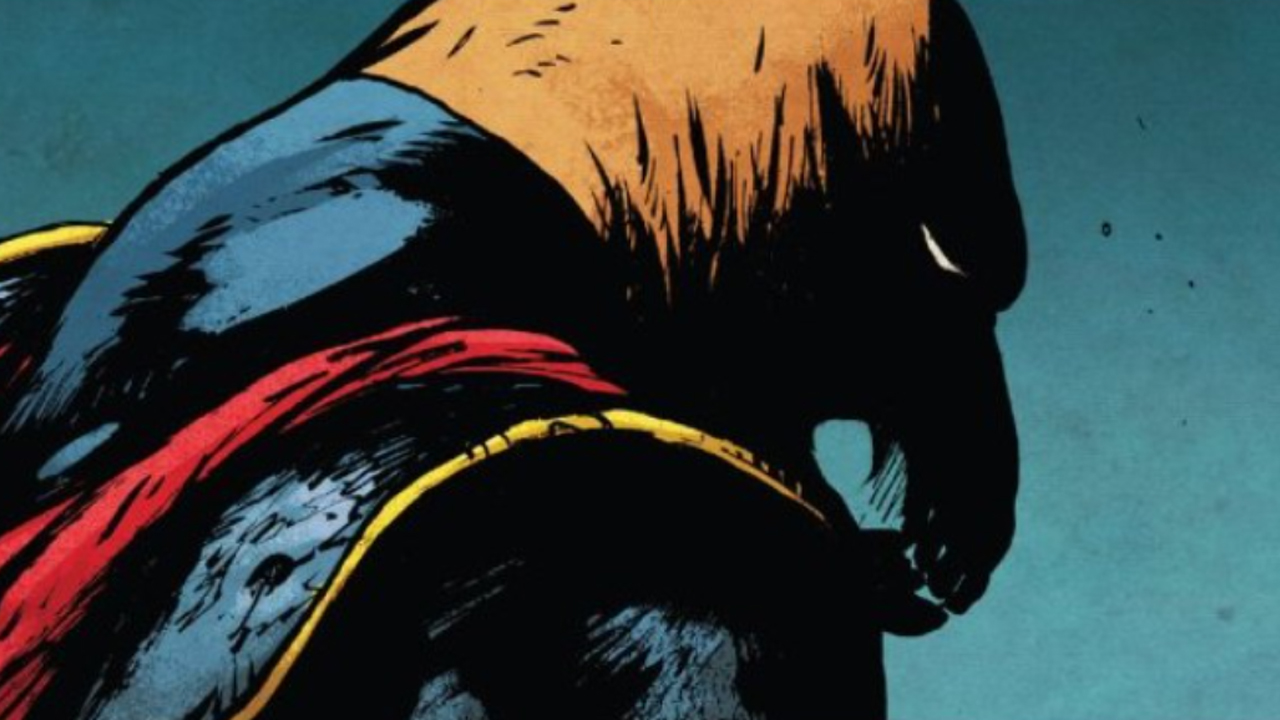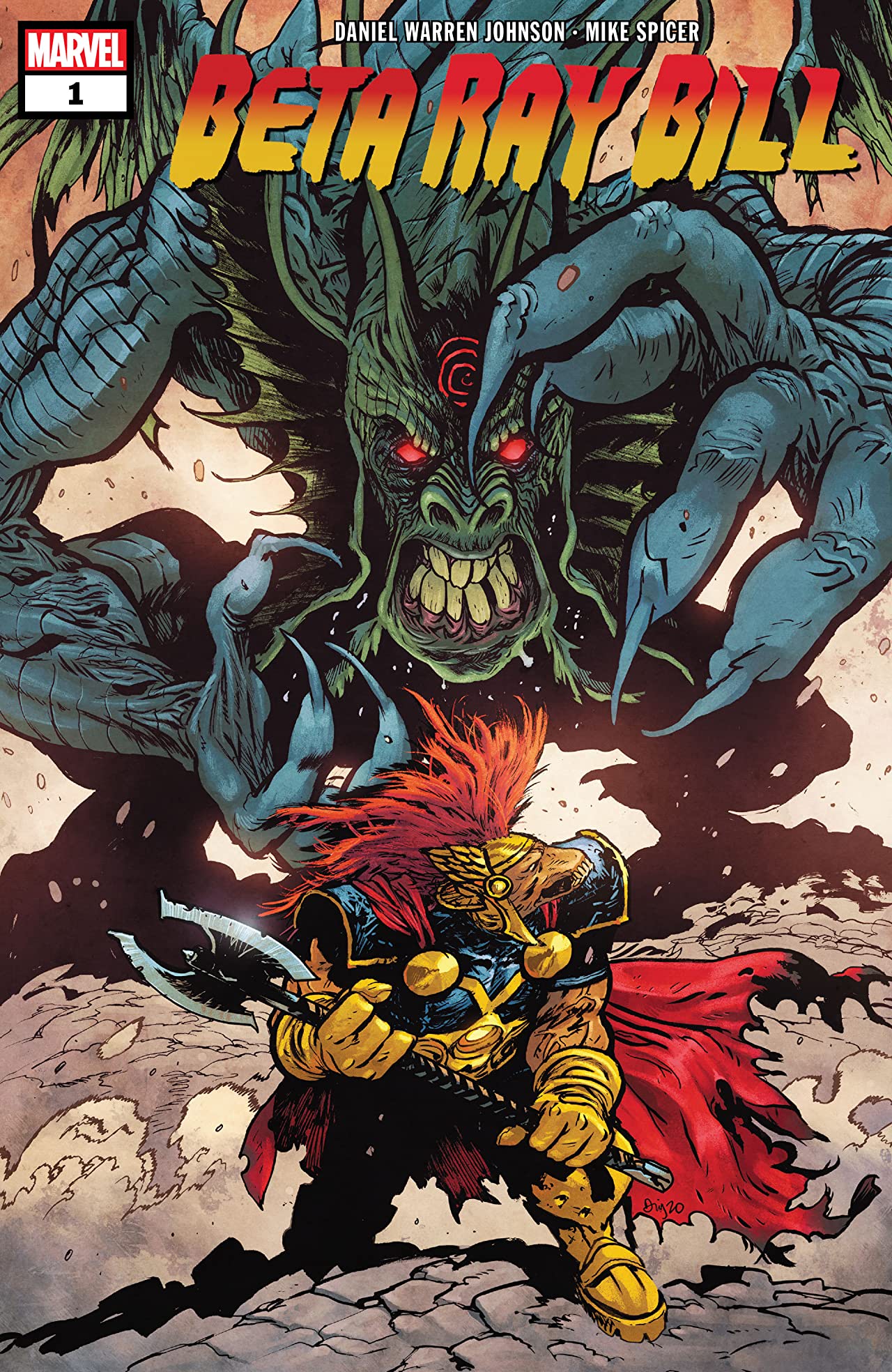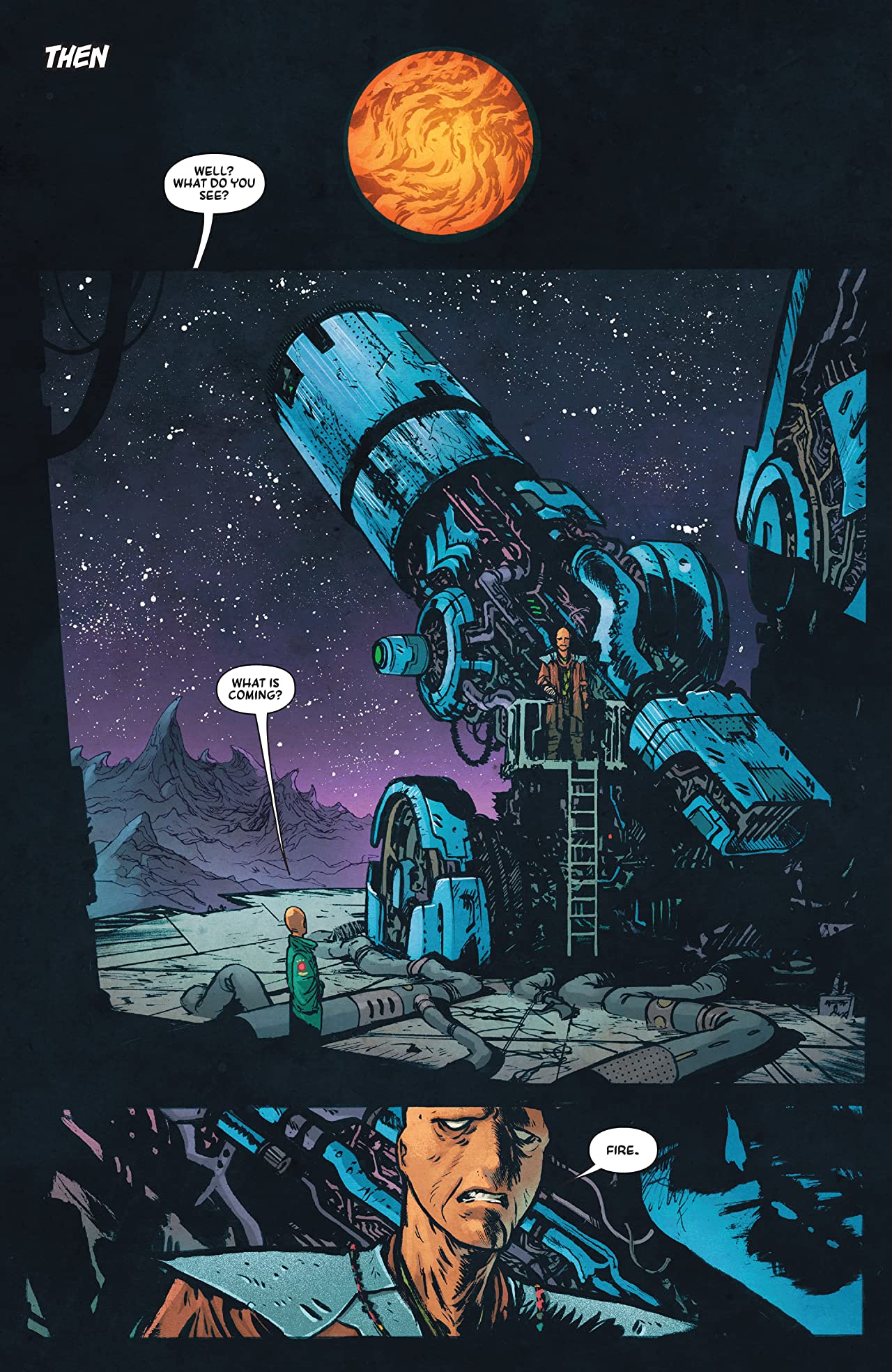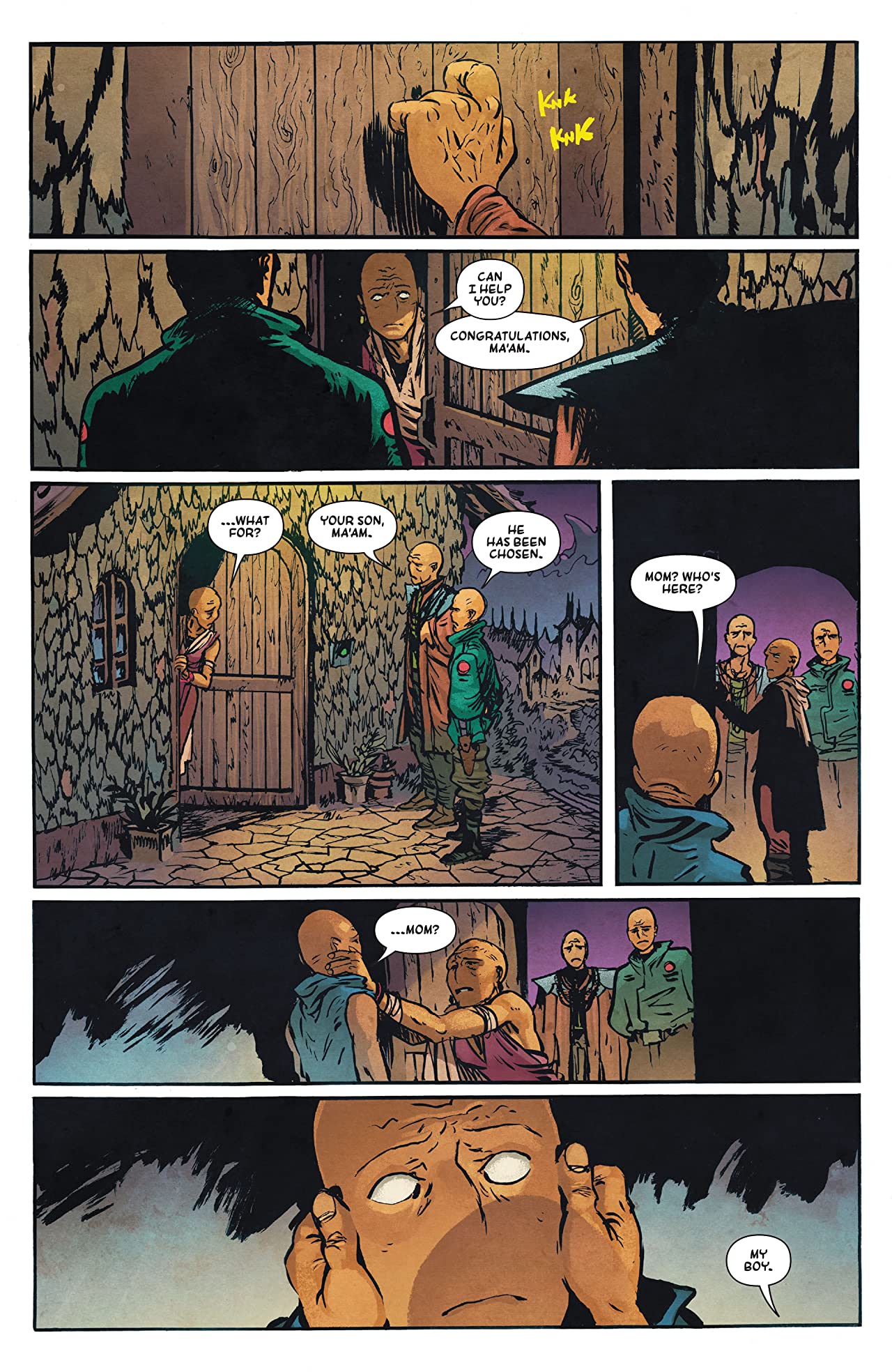Best Shots review: Beta Ray Bill #1 showcases the toxic masculinity that's inherent in most superhero stories
Beta Ray Bill is feeling what we're all feeling this day and age

Sometimes you are just not having a good day. In those times, no matter what you do and what you accomplish, you just can't live up to other people's expectations. It could be a bad day, a bad week, or a bad year. But you just have those times where nothing you do is good enough. It's hard to get through those times, especially when others around you look like they're having the best days ever. 'Why can't I be more like them?' you might ask. You feel everyone's eyes saying even as they try to console you and say you'll do better next time. Those times suck. You just want to disappear into the night to get a bit of time away from everyone and just for yourself.
Written by Daniel Warren Johnson
Art by Daniel Warren Johnson and Mike Spicer
Lettering by Joe Sabino with Daniel Warren Johnson
Published by Marvel Comics
‘Rama Rating: 9 out of 10
Welcome to the life of Beta Ray Bill in 2021.
When Beta Ray Bill first appeared in Thor #337, when it was Thor who was having one of those bad days. Horselike alien Beta Ray Bill was able to wield Mjolnir, something only the truly worthy (meaning only Thor himself) was supposed to be able to do. But Mjolnir, Thor, and the All-Father Odin recognized Bill's worthiness and gave him his own enchanted mallet Stormbringer, making Thor and Beta Ray Bill true brothers in arms. Flashforward to just a few months ago, when Thor was briefly a herald of Galactus and Bill confronted him. In the space of their battle, Thor shattered Stormbringer and established himself as the one-and-only true alpha male once again.
In Beta Ray Bill #1, Daniel Warren Johnson picks up Bill's story. Thor has made him a guardian of Asgard, but is Bill really up to the task? How can he even hope to be Thor's equal when Thor has shown him that Mjolnir will always beat anyone or anything that tries to claim the throne.

Johnson's Asgard is not pretty or shiny. It's not some golden, heavenly city like it is always shown to be. Instead of bright spires and rainbow bridges, Johnson's Asgard looks more like one of the lesser castles from Game of Thrones, one of the ones that can barely keep the enemies out of their gates. It's wartorn and shabby. So when it's attacked by a puppet of Knull (and therefore tangentially tying into whatever event is happening elsewhere in Marvel Comics right now,) it's up to Bill to rally the warriors of Asgard, to give the inspiring speech that will inspire them all and carry them into victory. And just about when he's about to get to his "They may take our lives, but they'll never take our…" moment, Fin Fang Foom bursts through the walls, interrupting Bill and never giving him his moment, his spotlight as a leader of men. Instead of being the hero, Beta Ray Bill becomes a punching bag for Foom and the universe.
Johnson, colorist Mike Spicer, and letterer Joe Sabino (with Johnson also contributing to the lettering) make sure that you feel every punch, every roar, and every piece of debris flying through the air in this comic. Here's a comic that is truly a tactile experience, where you experience the force and percussive booms of every blow. They pull you into the comic and the action by making the sound effects truly a part of the comic. But they also set the whole scene throughout by the details that they include. The clothes in a Daniel Warren Johnson comic feel like clothes that people actually wear. When the Lady Sif walks into Bill's chamber, wearing her usual red outfit, you can feel the fur of her collar and the weight of her cape on her shoulders. They have form and heft to them. Bill's uniform, a homage/copy of Thor's traditional garb, carries the burden of meaning and association to Thor. The art contributes so much to the whole mood of the comic.
Picking up after the destruction of Bill's symbol of power, this book deals with the consequences of that act. Without his weapon, what is Bill's worth as a warrior of Asgard? As Thor's right-hand man? As Sif's lover? If the hammer made the man who he was, he struggles to understand what he is after the hammer's destruction. Without Stormbringer, Beta Ray Bill has to explore his own self-image and self-worth in a city of beings who are used to being worshipped and adored. Thor has neutered Bill so what does that leave? That's what Bill has to figure out.
Get the best comic news, insights, opinions, analysis and more!

Beta Ray Bill #1 preview


It's very interesting to witness the way that Johnson is using Bill to showcase the toxic masculinity that's inherent in these gods' stories. In this comic, Thor is very much every bit the alpha male, the guy who comes in to save the day when nothing else is working. And everyone loves him for it. He's their hero and their king. He's who they want to be and who they want Bill to be, but Bill is rejecting that. Through Bill and Thor, Johnson explores this image of godliness by comparing and contrasting the two characters. Thor is strong, virile, handsome, and the king, while Bill is an outsider - impotent, disfigured, and a stranger in a strange land. While they've been depicted as equals before, Johnson concentrates on their differences.
Like his Wonder Woman: Dead Earth, Johnson is starting from a place of brokenness for these heroes. He's opened both stories with the characters at their lowest point, struggling to understand their places in what should be familiar and comfortable worlds. But while Wonder Woman was having to rebuild a life, Beta Ray Bill is rejecting the one that he feels trapped in. It's a world that expects him to be a manly man, a hero, and a god. While Bill is in the mud and grime fighting a giant space dragon, Thor gets the adulation, the women, and the glory for coming in and winning the day. Worse yet, Thor, who has been shown to have his troubles and doubts about his worthiness can't recognize those in others. He doesn't see the pain that his friend and comrade is experiencing. None of the gods can, and that's probably the biggest crime on trial in Johnson's comic.
Beta Ray Bill #1 is a depressing comic. It starts with one of those bad days that only gets worse as the hours go by. Caught in a spiraling funk, Beta Ray Bill probably needs a hug and a nice cup of tea, but all he gets is reminders of everything that he's not. Johnson sets up Asgard as a society that values the warrior and the hero and that's usually what Bill is. But his center has been lost so it's up to Johnson to now rebuild Bill's confidence. After the year most of us have just had, it's weird to think that Beta Ray Bill may be one of Marvel's most recognizable and relatable characters, the one who feels like he's going through what all of us have been for so long now.
Check out our list of the best digital comics readers for Android and iOS devices.
Scott is a regular contributor for Panel Patter, GamesRadar, and Newsarama, covering comic books since 2002. He specialises in comic book reviews, and also runs the blog I Lost It At the Comic Shop.


